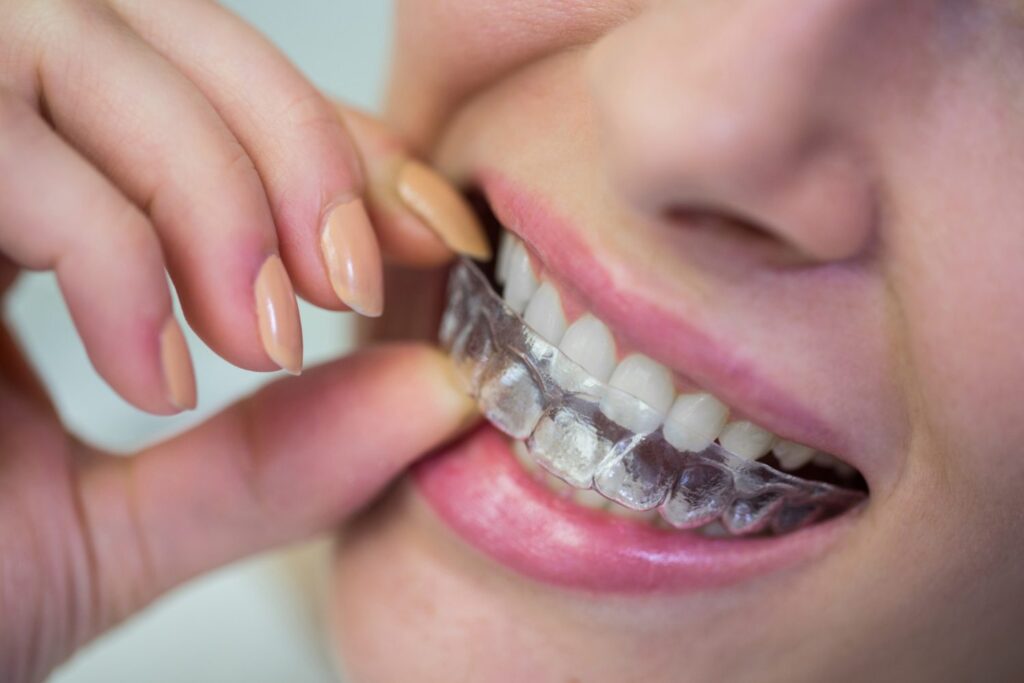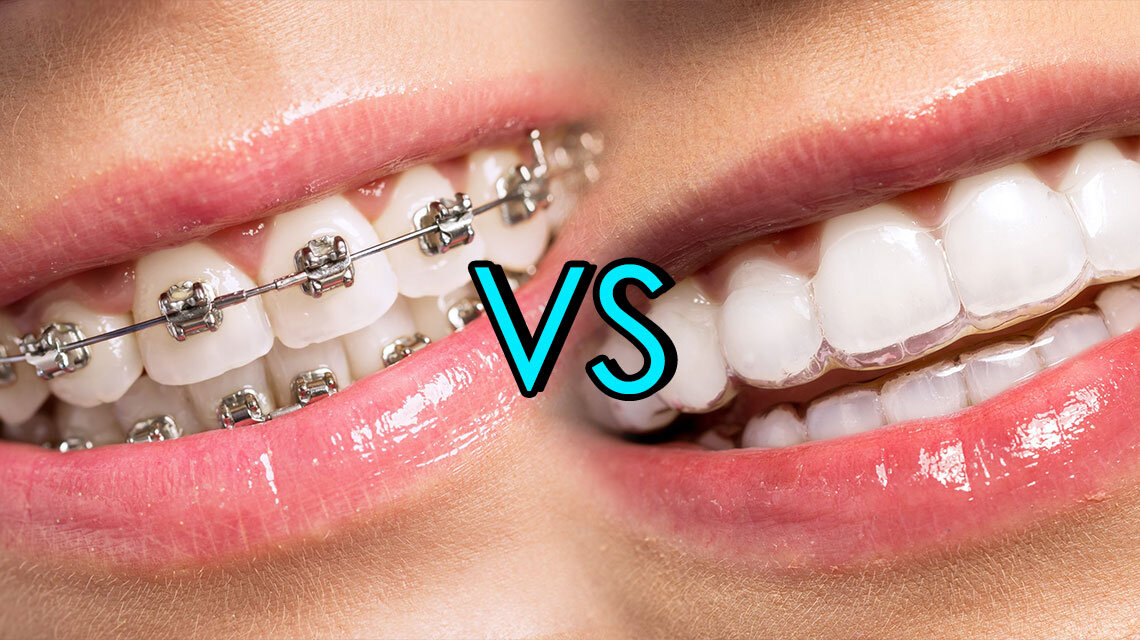How Invisalign Works: Your Guide to Clear Aligners and Their Effectiveness
How Invisalign Works: Your Guide to Clear Aligners and Their Effectiveness
Blog Article
Invisalign vs. Typical Braces: Which Option Is Right for You?
When thinking about orthodontic treatment, the selection in between Invisalign and standard dental braces presents a number of important elements that warrant careful assessment. Invisalign supplies a discreet option with detachable aligners, while typical braces offer a more noticeable yet efficient remedy for severe misalignment. Each option includes distinctive advantages and disadvantages connected to looks, convenience, therapy period, and cost. Understanding these nuances is crucial for making an educated decision that straightens with your individual preferences and way of living. The inquiry stays: which option will finest meet your orthodontic demands and expectations?
Overview of Treatment Options

On the other hand, typical dental braces contain steel brackets and cords that are adhered to the teeth. This technique uses constant pressure with time to accomplish alignment. While efficient for complex orthodontic concerns, conventional braces require normal visits for changes and can posture obstacles in maintaining dental hygiene because of the difficulty of cleaning up about brackets and wires.
Both options have their benefits, and the selection commonly depends upon particular oral problems, way of living preferences, and client compliance. Ultimately, seeking advice from an orthodontic specialist is essential for figuring out one of the most suitable therapy plan customized to individual demands. Comprehending the nuances of each alternative can significantly influence the total success of orthodontic treatment.
Visual Considerations
A considerable factor affecting the selection between Invisalign and standard dental braces is the aesthetic appeal each therapy supplies. Invisalign aligners are crafted from clear plastic, making them virtually unnoticeable when worn.
In contrast, standard dental braces are composed of metal braces and cables, which can be a lot more noticeable. While advancements in orthodontic modern technology have actually resulted in the development of smaller sized brackets and tinted elastics, standard dental braces still preserve a more noticeable profile. For some individuals, the visibility of braces might prevent them from looking for essential therapy.
Inevitably, the choice in between Invisalign and typical braces might depend upon personal preferences pertaining to appearances. People who focus on discretion commonly favor Invisalign, while those who are less worried concerning exposure may select standard dental braces. Recognizing the aesthetic effects of each option is important for making an informed choice that aligns with one's way of living and choices.
Convenience and Convenience

In regards to convenience, Invisalign aligners are detachable, enabling people to enjoy their preferred foods without restriction and maintain ideal dental health. Cleaning and flossing are simplified, as the aligners can be obtained during these regimens, whereas conventional dental braces require cautious steering around cords and brackets.
Additionally, Invisalign's modern system allows for fewer orthodontic gos to. Clients generally receive numerous sets of aligners simultaneously, which can improve the therapy process and lower time invested in the orthodontist's chair. On the other hand, conventional braces require normal adjustments, making them less hassle-free for those with hectic routines. Invisalign. On the whole, the comfort and convenience of Invisalign make it an attractive selection for many individuals looking for orthodontic treatment.
Treatment Period and Effectiveness
While both Invisalign and conventional braces work in correcting oral misalignments, the duration of treatment can vary considerably between the two options. Typically, Invisalign therapy can take anywhere from 12 to 18 months, depending on the complexity of the situation. The clear aligners function by slowly moving teeth right into their desired positions, and normal follow-ups with an orthodontist assistance make sure progress remains on the right track.
On the other hand, typical dental braces typically require a longer dedication, normally ranging from 18 months to 3 years. This is because of their set nature and using braces and cords, which can be a lot more reliable for extreme misalignments and intricate situations (Invisalign). The therapy efficiency of conventional braces is well-documented, as they permit exact modifications and higher control over tooth motion
Ultimately, the selection in between Invisalign and traditional dental braces may rest on both the expected treatment period and the particular dental problems at hand. Consulting with an orthodontist is crucial, as they can offer tailored suggestions based upon individual requirements, making sure visit this page the selected technique straightens with desired timeframes and results.
Expense Contrast and Insurance Choices
Cost plays a substantial function in the decision-making procedure for individuals taking into consideration orthodontic therapy, whether going with Invisalign or standard dental braces. Generally, the cost of Invisalign varieties from $3,000 to $8,000, while conventional dental braces commonly cost between $2,000 and $6,000. Variables affecting these costs consist of the intricacy of the instance, the duration of treatment, and geographical location.
Insurance protection can considerably affect out-of-pocket expenditures. Numerous oral insurance plans offer partial protection for orthodontic therapies, but the specifics can vary widely. It is critical for individuals to evaluate their insurance coverage policies to figure out the extent of coverage for either alternative. Typically, typical braces might be more often covered by insurance strategies compared to Invisalign, which some insurance providers categorize as an aesthetic procedure.
In addition, numerous orthodontic practices use adaptable layaway plan, making both therapy choices our website more available. Patients ought to make inquiries concerning potential funding options and discount rates for in advance settlements. Evaluating the overall cost, including insurance advantages and payment plans, is important for making an informed choice that aligns with both visual choices and budget considerations.

Verdict
In recap, the option in between Invisalign and typical dental braces rests on several variables, including aesthetic preferences, comfort, treatment duration, and expense. Invisalign supplies a very discreet, detachable option that facilitates dental health and dietary flexibility, while typical dental braces might be preferable for intricate dental concerns and typically come with a lower price point. Inevitably, consultation with an orthodontist is necessary to examine private scenarios and determine the most ideal treatment choice for attaining optimum oral placement.
When thinking about orthodontic treatment, the selection between Invisalign and conventional braces provides a number of crucial factors that merit careful evaluation.Comparing Invisalign and standard dental braces reveals distinct therapy alternatives for orthodontic adjustment.While both Invisalign and sites standard braces are reliable in correcting dental misalignments, the period of therapy can differ dramatically between the two options.Cost plays a considerable role in the decision-making procedure for individuals taking into consideration orthodontic treatment, whether choosing for Invisalign or traditional dental braces.In recap, the choice in between Invisalign and conventional dental braces pivots on several variables, including aesthetic preferences, convenience, therapy duration, and price.
Report this page